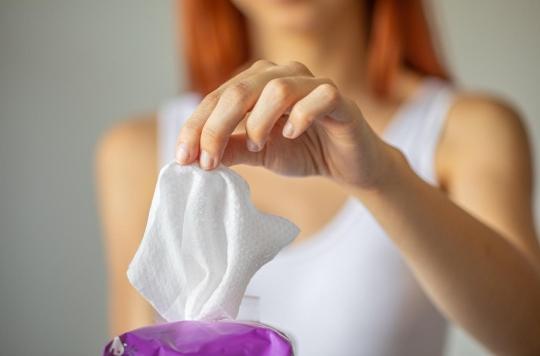In a survey sifting through 30 industrial products, the association 60 million consumers warns against the presence of additives and colorings in the ice creams and sorbets that we consume.

- Each French person consumes an average of 5.5 liters of ice cream per year.
- Our favorite ice creams are colorful and creamy, two criteria generally obtained by adding colorings and additives.
The summer heat pushes us to consume ice creams and sorbets to bring us taste and freshness. In total, each French person eats an average of 5.5 liters of ice cream per year. Among the most popular flavors are the classic vanilla, chocolate and raspberry. These products, when purchased in industrial form, are often highly processed”to flatter our taste buds”, notes the association 60 million consumers in a survey published in its magazine. To carry it out, they called on 60 testers who blindly tasted different brands.
Fat and additives for smoothness
60 Million Consumer Trial Reveals We Prefer Ice Cream”colorful and creamy”. Problem: these ice creams are obtained with a lot of additives and dyes. For vanilla ice cream, for example, the testers noted the balls that were too pale compared to those that tended towards yellow. “A contradiction, since vanilla is not yellowcovers 60 million consumers. The color is obtained thanks to dyes (annatto, curcumin, carotenoids), all natural.”
As for smoothness, it is generally obtained by adding ingredients rich in fat, such as crème fraîche present in large quantities in Häagen Dazs brand ice cream (40%). “These are expensive raw materials, which also affects the final price“, adds the magazine. Other brands, particularly in sorbets, have turned to texturizing agents, such as gums and gelling agents to obtain a smoother texture. Some chocolate ice creams have up to 30% additives.
Fewer ingredients, more fun
In its survey, 60 million consumers noted that they had not had the sugar and fat levels in the sorbets and ice creams tested. “Sugar and fat were not very discriminating criteria for the testers, describes the magazine. These products are known to be very high in calories, as confirmed by their poor Nutri-Score, which we had to calculate. Most manufacturers do not show it on the label.”
In conclusion, the magazine retains that the ice creams that have the most ingredients are not those that have won the approval of consumers. This is reflected in the price since “the first places go to products among the least expensive”. On the labels, the most processed products display up to twenty ingredients, compared to three for the simplest recipe sorbet.
.

















